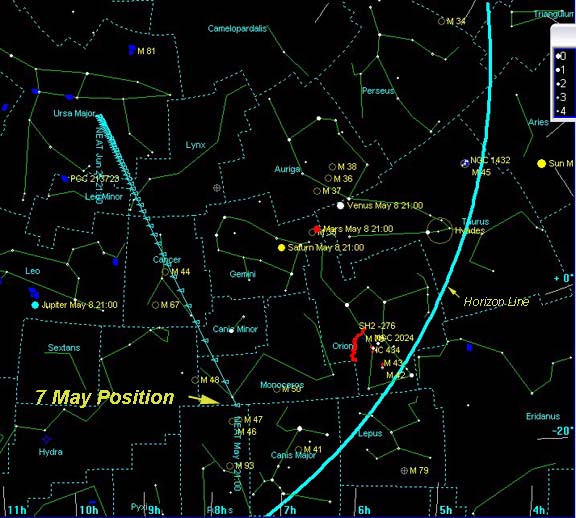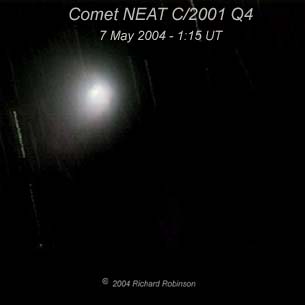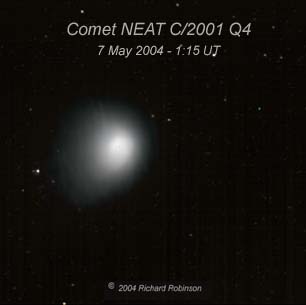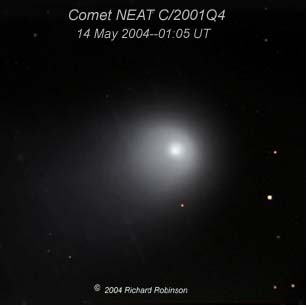| Comet NEAT C/2001 Q4
|
|
Comet
NEAT is neat, but in this case NEAT stands for Near Earth Asteroid Tracking.
This program is managed by the Jet Propulsion Laboratory.
NEAT cameras use 1.2-m (48") telescopes to find Near-Earth objects
(NEOs), both Near-Earth asteroids (NEAs) and comets. For this
comet, S. H. Pravdo, E. F. Helin, and K. J. Lawrence (Jet Propulsion
Laboratory) announced that the 1.2-m Schmidt telescope at Palomar
Observatory (California, USA) had found it on 2001 August 24.40 in the
course of the Near Earth Asteroid Tracking (NEAT) program. This
comet, NEAT C/2001 Q4, is visible from the northern hemisphere
during the summer of 2004. The chart above shows where to find it
at 9PM EDT. The position markers start on 7 May 2004 and continue
for 50 days. The light blue line is the position of the
horizon. You can obtain other data on the comet from Gary Kronk's Comet & Meteor Shower
Page and the Sky & Telescopes Comet Viewing Page.
|



